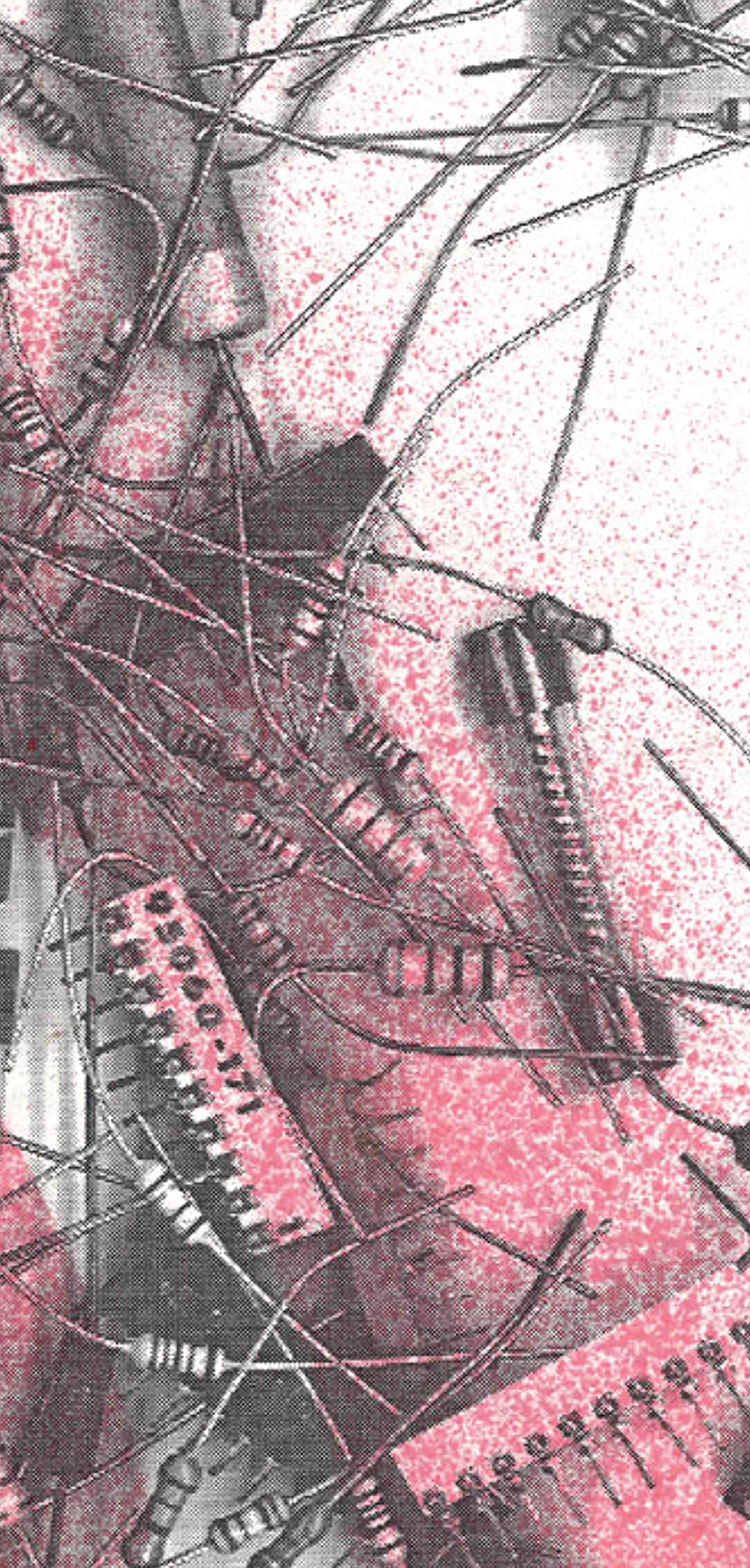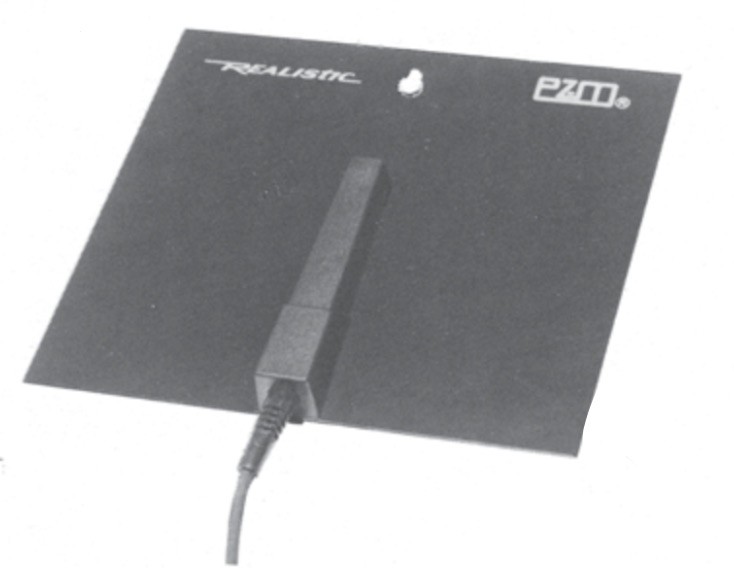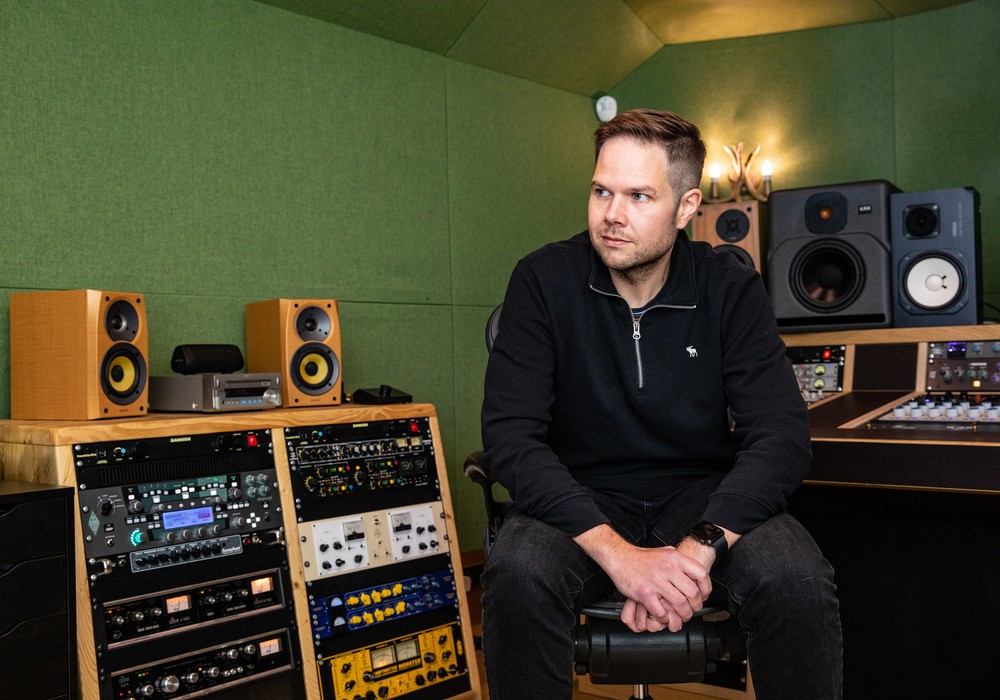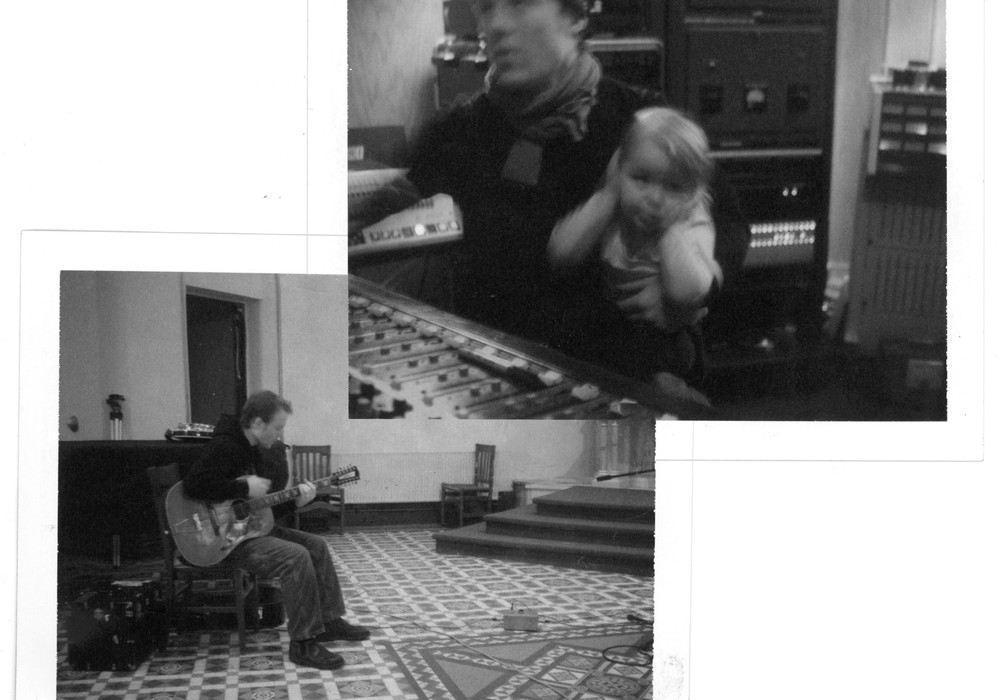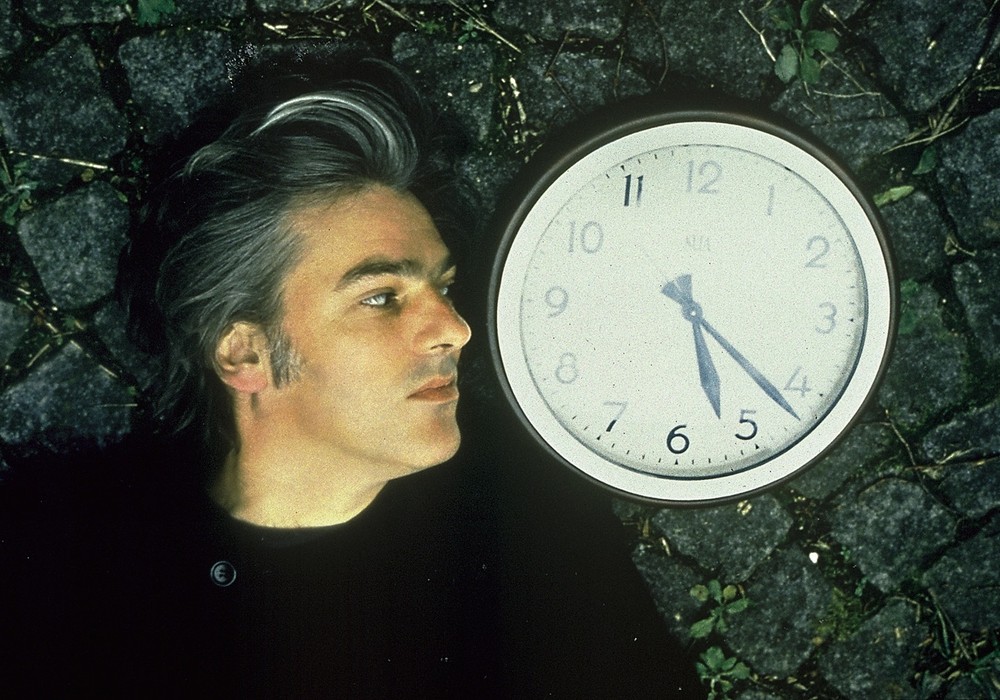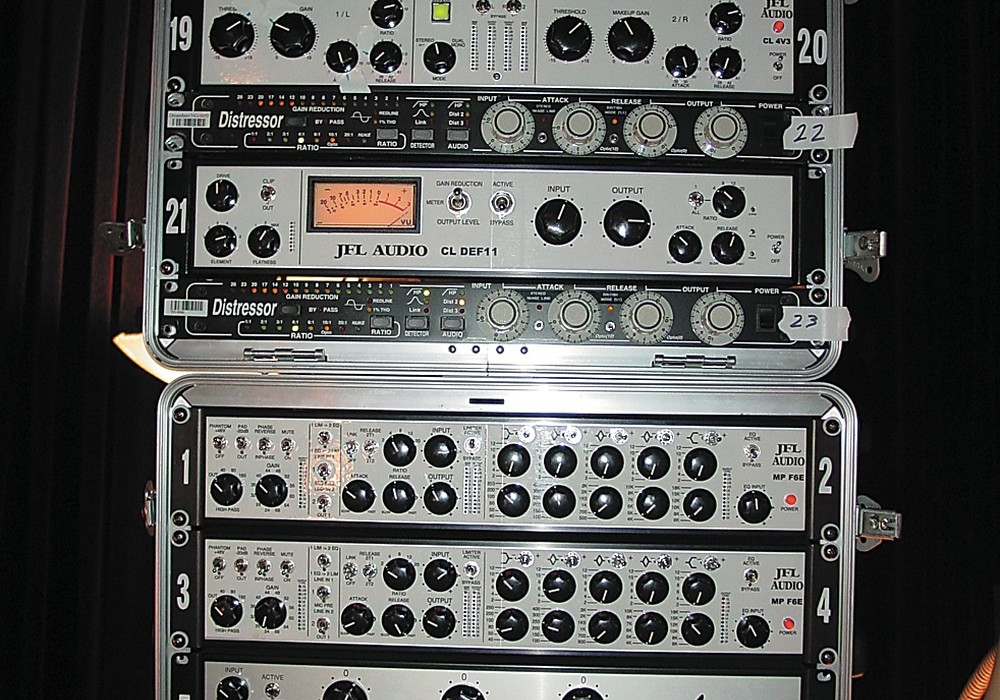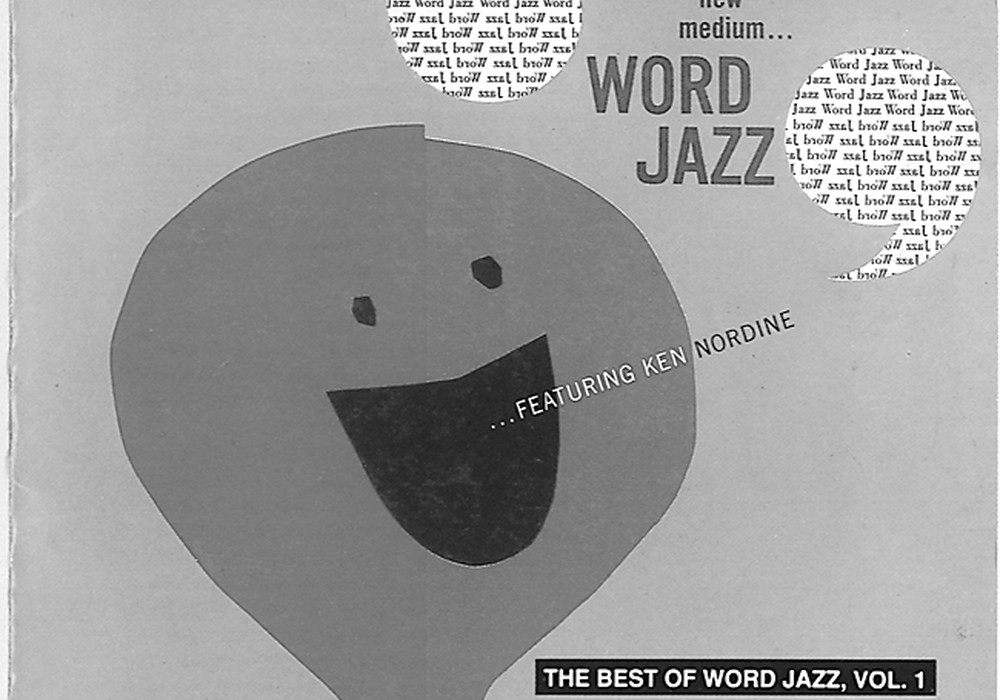The PZM microphone is weird. It's a 5 by 5.5 inch piece of black flat metal that somehow picks up sound in a really different way. All the sound around it is received in a large hemispherical pattern and it pretty much hears everything equally. And it sounds decent. And you can get it cheap at Radio Shack!
The first time I had to seriously consider the PZM microphone, I was recording with a band at my friend John Baccigaluppi's Enharmonik studios in Sacramento, CA. He had a couple of PZMs mounted up in the air above the drums for left and right overhead mics. I had previously seen these odd looking gizmos at Radio Shack and had assumed they were as useless as most Radio Shack junk. Instead, the sound these mics picked up on the cymbals was crisp and clear and a nice complement to the overall drum sound. Not long later, I saw a band place a pair of these mics on each side of a stage, flat on the floor, and plug them into a recording walkman. I asked them how these tapes sounded and they were very positive about the results. I was curious, to say the least.
Radio Shack, under the imprint Realistic, sells the Pressure Zone Microphone (PZM) at all their weird, little stores for $59.95. I believe they are actually manufactured by Crown, as they own the name PZM. Don't bother looking for the higher priced Crown versions though, there's a lot you can do with these little buggers!
First, if you have XLR inputs, you'll want to snip off the molded 1/4" plugs and wire up a male XLR plug. Amazingly, there's a three conductor wire in these thin cables and the rewiring for low impedance makes a big difference in sound clarity. See illustration 1 for wiring information.
The next change I made to the PZMs was to do away with the need for batteries. I opened up the battery compartments and soldered the two units together, parallel (+ to + and — to -), and then hooked up a 6 volt wall wart power supply to them. This seemed to give a higher output level as well as eliminating my fear of batteries running down during a session!
The little manual that comes with the PZM recommends mounting the mics "on a hard, flat surface at least four foot square." I mounted them on some pieces of 1/2" particle board that are 2 by 3 foot (4 by 4 foot seems a bit too large to move around!) and then nailed the boards up above the drums, as in illustration 2. These work great as overhead mics, and I build the sound up from these when setting up a drum mix.
Luckily, I set up one of the mics so I could easily pull it down and try it on other instruments. I tried a PZM (on the 2 by 3 particle board) and a Shure 57 on a guitar amp set to a loud, but clean setting. The PZM had a warmer, more defined low-midrange sound than the 57 and both had the same characteristics in the mid's to hi's. (Although at super loud volumes the PZMs do distort much earlier than the 57s.) When I tried the same mics on a moderately loud bass amp there was a much better overall sound from the PZM than the 57. It's probably the same effect that you get when using a large diaphragm mic, where the larger surface area picks up the lower pitched sounds with more clarity. What's amazing, though, is that all the treble is still intact, giving you a nice, sharp sound.
Another trick I tried before was leaving one of the mic setups on the wall and placing a vocal mic in front of it so that while doing vocal overdubs, both the mics are picking up the singer. The mix of the two mics gave a really interesting effect, partially due to the sound reflecting off the backing board and into the vocal mic, but also a slight phase cancellation that lent an eerie sound to the vocals.
Recently, John, who I mentioned earlier,...
